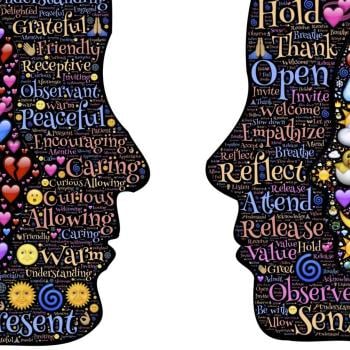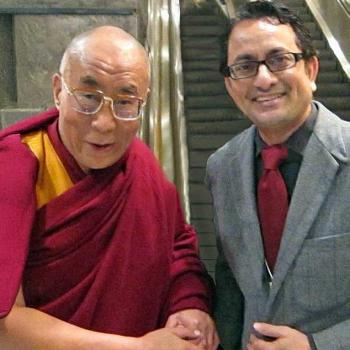
As immigrants, we must also do our part in integrating and assimilating, contributing the best of our cultures of origin to the country we now call home.
Breaking the Cycle of Fear: How Immigrants Can Win Over America
During our most recent inauguration, I witnessed a critical moment for immigrants in the United States, as Usha Vance, an Indian American, became Second Lady alongside her husband, Vice President J.D. Vance. Standing nearby on the dais was Melania Trump, the first Slovenian-born First Lady. Among the attendees were many whose lineage reveals recent immigration.
When we discuss immigration as a policy issue, it is helpful to define terms and understand the scope. According to a September 2024 Pew Research Report, over 30 million immigrants were in the U.S. workforce in 2022. Lawful immigrants comprised the majority of this group, with 22.2 million contributing to the economy and representing about 10% of the electorate. Another 8.3 million workers were unauthorized.
Democrats and Republicans may spar over the impact of these numbers, yet despite polarized media portrayals, voters for the two parties are aligned on many aspects of the immigration issue:
- 90% of Republicans and 66% of Democrats see the situation at the southern border—where large numbers of people are seen entering the country illegally—as a “crisis” or “major problem.” 73% of Democrats and 89% of Republicans believe that the government is doing a poor job of managing immigration at the border (Pew Research Center, February 2024).
- 62% of both parties believe that the U.S. should “allow some immigration, based on strict criteria.” 82% of Democrats and 78% of Republicans believe that “only those who meet approved U.S. criteria should cross the border” (YouGov, May 2023).
- 76% of Americans, including 91% of Democrats and 53% of Republicans, oppose the family separation policy (PRRI “American Values Survey,” October 2020).
The Role of Immigrants in America’s Present and Future
Immigrants have always contributed to America’s success, which appears poised to continue. This is as true today as it was at the nation’s inception. According to the Economic Policy Institute’s Bureau of Labor Statistics data analysis, “foreign-born” workers made up nearly 19% of the U.S. labor force in 2023, up from 15.3% in 2006.
Their efforts fuel business and job creation: MIT research indicates that immigrants are 80% more likely to start a business than native-born U.S. citizens and are responsible for 42% more job creation than native-born founders.
Additionally, a 2022 study by the National Foundation for American Policy found that 55% of U.S. “unicorn” startups—private companies valued at over $1 billion—were founded by immigrants. They have also fueled innovation, leading companies like Google, Tesla, NVIDIA, Oracle, and Goldman Sachs.
Finding Common Threads
Looking to the future, immigrants contribute mightily to the country’s economy. As Americans of European ancestry yield their numerical majority due to aging and smaller family sizes, minorities and immigrants are filling essential roles and boosting the country’s economic outlook.
Far from being a drain on the nation’s social net, immigrants contribute as much, if not more, than they receive. A recent CBO report predicts that immigrant workers will add $7 trillion to the U.S. economy and generate $1 trillion in federal tax revenue over the next decade. By 2042, immigrants will drive all U.S. population growth, helping to sustain Social Security as more Americans retire.
Immigrants are also investing in America’s future in concrete ways, such as serving in the military. From the Revolutionary War to today’s U.S. Armed Forces (with 45,000 foreign-born service members), immigrants have always been ready to put their lives on the line to defend the nation they love. As of 2022, 4.5 percent of all veterans—731,000 out of 16 million—were foreign-born (Migration Policy Institute). They hailed from Mexico, the Philippines, Rwanda, China, Cuba, Germany, and many other countries. But they all had one thing in common: the desire to serve, contribute, and, if necessary, to sacrifice.
The Cost of Prejudice
Despite the overwhelmingly positive role immigrants play, they are increasingly at risk of persecution. Hate crimes are on the rise in the U.S., and many of them are directed at immigrants or minority communities. FBI statistics from October 2023 show that hate crimes increased by 47% from 2019 to 2022, with 60% being racially motivated and 15% targeting religious groups.
Some recent examples include:
- The Atlanta Spa shootings (2021)
- The El Paso Walmart shooting (2019)
- Hate crimes against Jewish and Muslim communities
Many complex factors underlie these incidents, including economic dislocation, individual grievances, access to weapons, and racial scapegoating by political actors.
Our Duty in the American Tapestry
Earning American citizenship is like winning the lottery for an immigrant. You feel blessed to be part of this dynamic land of unlimited possibilities. But with this privilege comes a responsibility to respect and build upon what has already been established.
I believe that being an ideal immigrant means contributing positively to our new society while honoring our heritage. It’s about finding a balance, embracing new cultural norms while sharing our traditions in ways that enrich the broader community.
An ideal immigrant embodies resilience, adaptability, and mutual respect, building bridges between cultures to create a shared sense of progress and inclusivity.
Bridging The Divides
I remember reading a 2016 Washington Post story about a journalist interviewing a couple at a Trump rally. When asked why they attended, one person replied that the bakery where they’d bought bread for years no longer spoke English. I heard not bigotry, but fear—the fear of being sidelined, displaced, and disappeared.
As baseless as these fears may be, they persist. And as immigrants, we shouldn’t ignore them. Instead, we should reflect, empathize, and take action. There is much we can do to help our fellow citizens accept our presence and welcome our contributions.
Some ways we can bridge the divide include:
- Learning English: Strengthens communication and integration into local communities, schools, and workplaces.
- Engaging in Community Life: Volunteering and attending events demonstrate shared values.
- Understanding Local Laws and Norms: Respecting social etiquette and legal frameworks prevents misunderstandings.
- Sharing Cultural Traditions: Hosting events and exchanging traditions enrich the community.
- Supporting Other Immigrants: Creating networks to ease transitions into American life.
- Participating Politically: Staying informed and voting to contribute to America’s future.
- Building Friendships Across Cultures: Fostering mutual respect to reduce division.
Has America achieved the goal of a “perfect union”? Not yet. But it is a work in progress.
As America continues to evolve, immigrants will shape its future, contributing to new industries, new regions, and new cultural dynamics.
Yes, immigration is changing America.
For the better.
Also, please consider reading this article – 7 Things Parents Can Do To Teach Kids To Reject Hate
If you like this article please leave a comment below, I would love to hear your thoughts.














